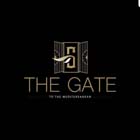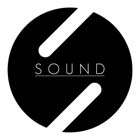
Stage & Studio Lighting Installation & Design in Los Angeles
Every stage director knows that the right stage lighting makes a world of difference during production. Whether you are on a movie set, in a concert hall or theater, lighting plays a massive role in creating the right ambiance and delivering accurate reproduction of all skin tones. This is why Acue Express offers film and tv studio-specific lighting with flicker-free operation for television use. We believe in high-quality light output, and we have spent several years using our latest stage lighting technology to make our products stand out. With our reasonable price point, we have both LED and incandescent fixtures available as well as different types of LED Video walls, Moving head fixtures, static color changing fixtures, special effects, trussing, cases, DMX solutions & so much more. Our television studio lighting designs are not left out of this as we only use state-of-the-art LED lighting fixtures to deliver the perfect results for our clients.
Our commitment to excellence
With 20 plus years of stage and production lighting experience and thousands of satisfied clients, we have stocked superior products and provide only the best services to give our clients 100% satisfaction. With our knowledge and experience, we are able to bring any vision to life! Knowing what equipment to use where is key to transforming any stage or studio, and we know how to provide just that! We combine technological expertise and functionality with our passion for using light to transform and enhance any stage or studio to deliver successful outcomes. Our fully automated options are especially useful for studio settings. While you are on-set, you would want to transfer visual information to your audience with as much radiance as possible. We make this happen by combining just the right number of light fixtures to deliver unique results. Our stage design and operation encompass sales, installation, setup, programming, and repair/maintenance service. We also believe in creating a long-lasting relationship with our clients, which is why we offer exclusive after-sale support to attend to all your issues.
Here at Acue Express, we love what we do. We’re here to help breathe life into your wildest imagination and bring your visions to life. We will be there when you need us! Not only do we provide some of the most technologically advanced products on the market, but we can also provide design, consulting, and installation services for all of it as well. Our attention to detail, unwavering diligence, and years of knowledge gained from experience are all at your disposal as we deliver affordable LED lighting options.
Call us now at (818) 646-7526 for a quote or contact us using the form below.
Trusted Clients
Get a Quote

Stage & Studio Lighting
Stage lighting is the type of lighting that is used in the production of theatre and other performance arts. Stage lighting in modern times includes the use of special effects such as lasers and even fog machines. The term lighting designer of a technician is a term that is used to define people who work on stage lighting. There are a number of equipment that is used in stage lighting. These instruments are used in illuminating concerts and other performances that are taking place in the live performance venues. Furthermore, these stage lighting instruments can also be used in lighting televisions and sound stages. All stag lighting instruments have the following components.
- Housing
Usually, the lighting instrument housing is a metal or plastic container which is the body of the entire instrument. It helps in the prevention of light from spilling in unnecessary areas. This housing has all the exterior features, apart from the lens. People who have designed these housings have made them in such a way that they help in reducing the amount of heat thy come in contact with and increases the efficiency of the lamp.
- Lens
The lens, also known as the opening is the space from which the beam of light is expected to come from. Lenses are essential in controlling the beam of light.
- Reflector
The reflector is another integral component of the stage lighting instrument. The reflector affects the direction and the quality of the light that is produced. Usually the reflector is located at the back of or around the source of light to channel the light being produced towards the lens. In addition to that, reflectors are also used to selectively reduce or to eliminate the light that is not needed.
- The Yoke
Most lighting instruments are supported by a yoke. The yoke is u-shaped and acts as a support to the lighting instrument. Moreover, it is fixed to the sides of the instrument, at two points to give a complete axis of rotation. Some yokes are manually controlled whereas some are motorized, motorized yokes allow for remote control systems to alter where the fixture is illuminating during a show.
- Attachment devices
The attachment device in this case is the C-Clamp. These are hook clamps that are meant to hold the stage lighting instrument in a secure position. Once the instrument is tightly secure, it can be tilted using the adjustment options of knobs, located on the yoke. In situations where the lamps fail, safety cables are used in supporting the lighting instruments. Also, there is a metal pole that is attached to the instrument at the end. This allows the instrument to hang to the side and not below the electric.
- Lamp
Most of the lamps use halogen gas as opposed to inert gas. In lighting the equipment, work lights are mostly used as compared to fluorescent lights. This is because work lights are more efficient and cannot be dimmed easily as compared to the fluorescent lights. You have to use specialized dimmers in dimming the work lights.
- Accessories
There are non-intelligent fixtures that are designed to accept different accessories. These accessories assist in modifying the output of light. The most common stage light is the gel frame holder. Its main function is to hold the gel mounted in metal frames or cardboards.
Functions of Lighting
There are a number of functions of stage lighting, some of which include the following.
- Visibility
The main function of the stage lights is to ensure that the audience is able to see everything that is happening on the stage. Any lighting design is ineffective if the viewer cannot see the characters. However, there are some performances whereby the main intention is to make the characters invisible. This mostly occurs when the performance is explicit
- Focus
Stage lights are designed to focus on what is happening on the stage. The stage lights can either focus the attention of the audience in one direction, while it shifts their attention from another direction.
- Setting the mood
Someone can tell from the light rays the mood of the scene. Strong lights have sharp effects as compared to warm lavender lights. This is to say that harsh lights have different effects from warm lights. Very important for concert stage lights.
- Location and time of the day
Different colors of lights portray different locations and times of the day. Most of the time, blue light is used at night whereas red or orange lights are used in the daytime, which portrays sunrise or sunset.
- Plot
A stage light has an upper hand in making the action on stage to be interesting or boring. It has the capability of triggering the actions onstage. You must use the best lights to give your audience maximum satisfaction.
- Showing what is required
Stage lightings are directed to show the audience only what they are supposed to see. In addition to that, when the audience sees what they are not supposed to see, their attention can shift, and this means that they will not be impacted by the performance which is onstage.
- Show the desired effects
For instance, in clubs or concerts, the DJ has the main function of entertaining the guests with the best music possible. However, dancing to plain music without some concert lighting effects can be very boring. Additionally, some people only feel comfortable dancing when no one is watching. They can benefit hugely from dancing while the stage lights are on. DJs use lasers and colored lights to hype the guests and as a virtual effect.
Qualities of Lighting
Stage lights possess different qualities. These qualities depend on the intensity of the light being illuminated. Some of the important qualities in lighting include the following.
- Color
The temperature for the color is measured in kelvins. They type of color that light illuminates depends on the color of gels in the optical path, the color of the lamp, and the color of the material which is lit, among others. For instance, a tungsten lamp is a control when you insert one or more gels to the optical path. Consequently, when a single gel is inserted in the optical pathway, the light of the same color is produced. For example, when you insert a red or blue light, it produces the same color.
Consequently, the power of a lamp influences the color in the tungsten lamp. The filament bulb in the tungsten increases more production of the orange light when the lamp power is reduced. This is different as compared to the white light that is produced at full power. This whole process is known as an amber shift.
- Direction
In stage lighting, this is used to refer to the quality, shape, and the uniformity of the output of the lamp. The pattern that the lighting instrument takes largely depends on three factors, which are the specifics of the lamb, the assembly of the lens, and the reflector. The difference in the sizes and shapes of the reflector, the position in which the lamp is mounted and the nature of the lens that is in use have a direct impact on the pattern of the light.
- Stage light focus, positioning and hanging
The focus, positioning, and hanging points are the points where the stage lighting instrument is pointed out. How the instrument focuses finally should be at the same level as the actor’s head when he is standing at the center of the stage. In this case, the position is used in referring to the location of the instrument whereas hanging is the process where the instrument is allocated position.
Furthermore, there are some instruments that are automatic and do not require human involvement for them to function. Automated instruments mostly move the entire fixture of the body. Also, automated instruments moves the mirror which is placed in front of the outermost lens. This leads us to the two categories of automated instruments which are the "moving head" and "moving mirror" instruments. The main advantages and disadvantages of these two categories include:
Advantages of Moving Head
>moving head has all the effects and the lamp assembly inside the head, and the transformers and other electronics are in the base of the equipment.
>moving head has a greater range of movement.
Disadvantage
They are expensive.
Advantages of the Moving Mirror
>faster and less costly as compared to the moving heads
Disadvantage
>have a narrow range movement
Types of Stage Lights
There are different types of stage light instruments. These instruments have been classified into two broad categories which are: Floodlights and Spotlights. The difference between these two classifications is the characteristics of the light that is produced. Floodlights illuminate a wide area as compared to spotlights that illuminate smaller areas with a more controllable beam. Spotlights produce lights which are focused, mostly in one direction, whereas floodlights produce light that is more diffused. However, there are some instruments that fall in between spot and floodlights. Where the instrument is classified depends on the type of the instrument and how it is used.
- PAR lights
This stage lights, known as the Parabolic Aluminized Reflector lights mostly when a certain amount of the flat light is needed for creating a scene. This type of light is mostly used in architectural lighting and can sometimes be found in different hardware stores. This type of light is important, especially in rock and roll concerts, with low budgets. This is because they are easy to maintain, are lightweight ,and give the highest output. Moreover, all PAR lights produce a pool of light that is an oval shape, except those that have a narrow lens.
- Strip Lights
Strip lights are also known as cyclorama lights. They are mostly used in lighting the curtains which are at the back of the stage. The lamps in this type of light are covered in gels with a variety of colors. Each of these colors is controlled by a separate blurrier circuit.
- Scoop Lights
Unlike the other types of stage lights, the scoop light is around a fixture that does not have any lens. This property makes them cheaper as compared to the other lights. Scoop lights are mostly used in lighting the stage from above. Furthermore, this type of light is intermittently used as a work light.
- Spotlights
A spotlight is mostly used in the theater to create a pool of light on the stage. In addition to that, there are types of spotlights, and each has a different use and purpose. Some of the examples of spotlights include Pebble convex lanterns, Fresnel lanterns, and profile spots.
- House and work lights
House lights are designed to provide light on the audience’s theater seats and aisles, before and after the performance. Home lights are controlled using dimmers and sometimes simple switches are used in place of dimmers. On the other hand, work lights are designed to provide light to backstage or a house. They are mostly fluorescent and cannot be dimmed easily as the house lights. Plot elements are usually emphasized when both house and work lights are off during performances. Most of the time, the house light is usually on a dimmer, and when it is not, it is controlled by the switch under the control of the stage manager.
In conclusion, lighting, especially stage lighting is important in theatres and other performances. There are some important qualities of pretty lighting for concerts, which should be looked into thoroughly. Some of the important qualities include color and direction. In addition to that, there are different types of stage lights, all of which perform different functions. Stage lighting instruments need care and maintenance to ensure that they serve you well in the future. Moreover, stag lighting equipment has important components such as lens, yoke, housing, and reflector. The housing keeps the equipment safe from rain and damage. The lens on the other hand, is an opening that produces the intended light. Lastly, the yoke is responsible for supporting the lighting equipment.










